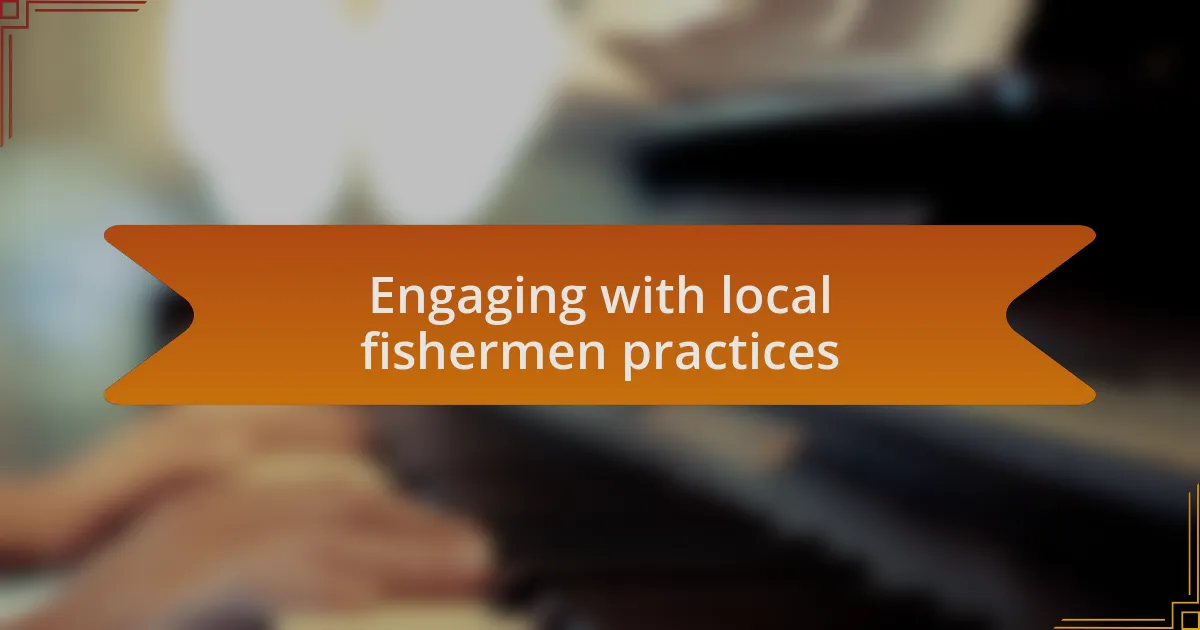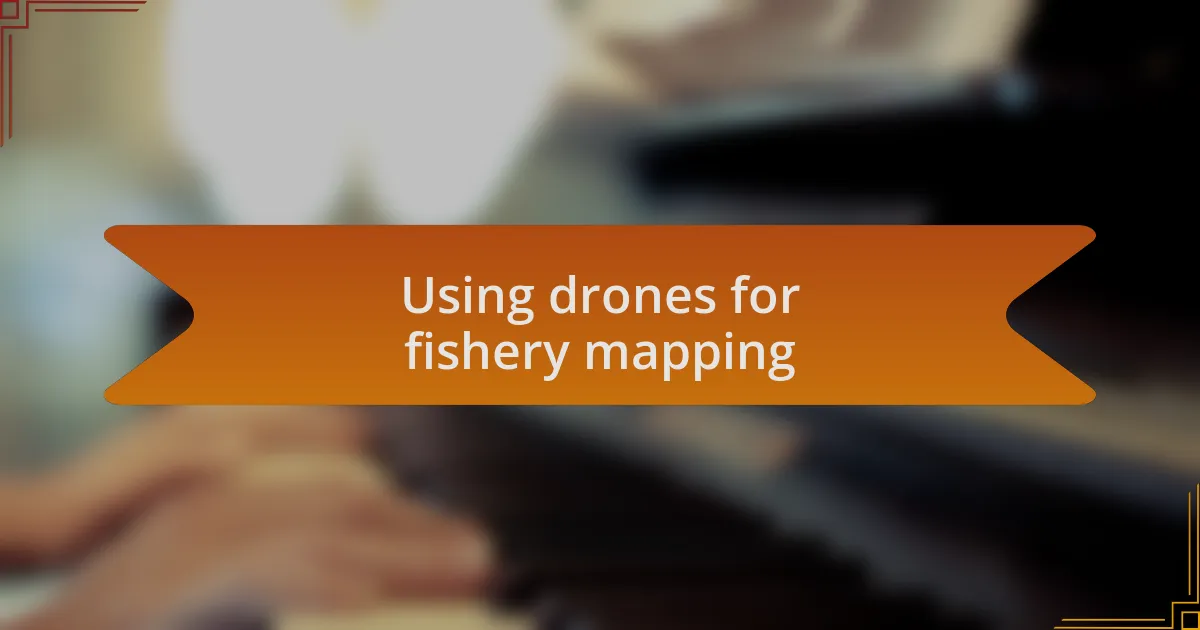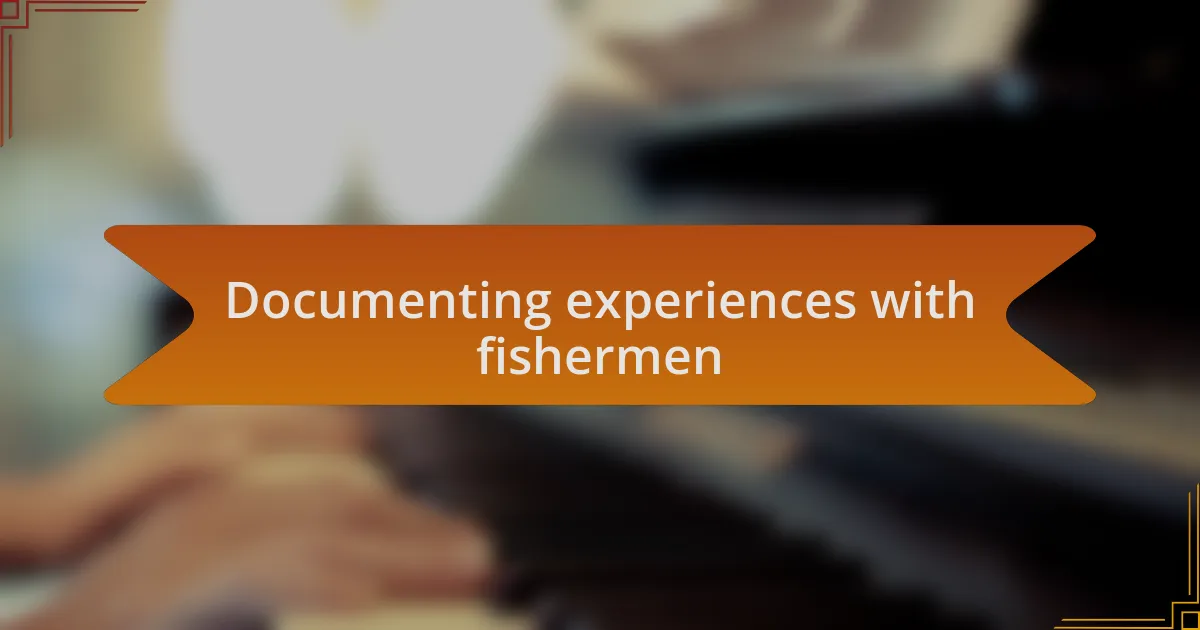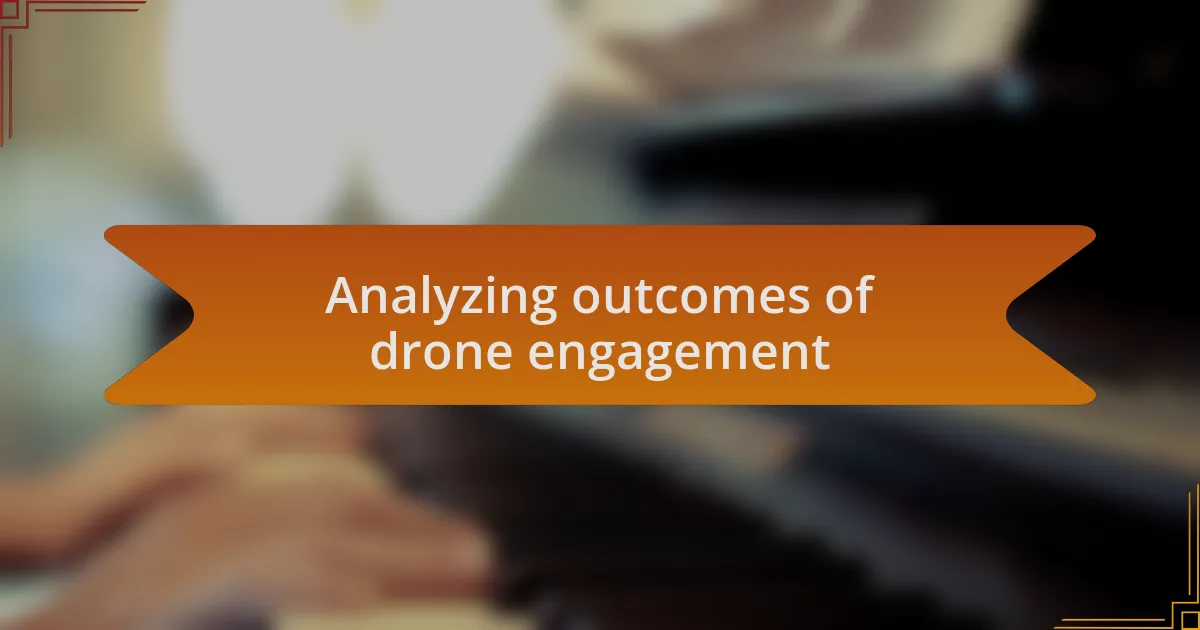Key takeaways:
- Drone mapping technology enhances spatial data collection and analysis, significantly improving decision-making processes.
- Zanzibar’s fishing industry intertwines tradition and sustainability, with local fishermen facing challenges such as overfishing and environmental changes.
- Integrating drone technology with local fishing practices fosters collaboration, allowing fishermen to make informed decisions about sustainable practices.
- Documenting fishermen’s narratives highlights the importance of their cultural heritage and the struggles linked to their marine environments.

Understanding drone mapping technology
Drone mapping technology has revolutionized how we capture and analyze spatial data. With drones equipped with high-resolution cameras and sensors, we can create detailed maps and surveys in a fraction of the time it used to take. I vividly remember my first time witnessing a drone in action; it felt like watching the future unfold right before my eyes.
As I stood by the shoreline, I couldn’t help but marvel at how drones effortlessly navigated the skies, producing stunningly accurate topographical maps. It made me wonder—how did we ever manage without such technology? The way drones collect data through aerial imagery enables us to cover vast areas and gather crucial information that was previously inaccessible.
Moreover, the integration of drone mapping with Geographic Information Systems (GIS) has opened up new avenues for analysis. I often reflect on the significance of this combination—think about it: real-time data collection alongside powerful analytical tools leads to informed decision-making. It truly enhances our understanding of environments, allowing us to approach challenges in innovative ways.
Overview of Zanzibar’s fishing industry
Zanzibar’s fishing industry plays a pivotal role in the local economy and culture. Traditional fishing techniques have been passed down through generations, blending cultural heritage with economic necessity. I remember sitting by the docks, listening to fishermen share tales of the sea, which struck me with how deeply interconnected their lives are with the rhythms of nature.
The waters surrounding Zanzibar are teeming with diverse marine life, making it a vital fishing ground. Fish such as tuna, snapper, and octopus are not just food; they’re a source of livelihood for many families. Reflecting on my interactions with the local fishermen, I was amazed at their deep respect for sustainable practices, often citing the need to protect their livelihood for future generations. Don’t you think it’s inspiring how they balance tradition with the pressing need for sustainability?
However, the fishing industry in Zanzibar faces its own set of challenges. Overfishing, competition from larger commercial operations, and environmental changes are impacting local fishermen. It was disheartening to witness the concern in their eyes as they discussed diminishing catches and the struggle to provide for their families. I found myself wondering: in an age of rapid change, how can modern technology, like drone mapping, support such resilient communities while preserving their traditions?

Engaging with local fishermen practices
Engaging with the local fishing practices in Zanzibar opened my eyes to the rich tapestry of their daily lives. One evening, I joined fishermen as they prepared their nets, engaging them in conversations about their techniques and experiences. Their laughter and camaraderie made it clear that fishing is not merely a job; it’s a way of life that fosters deep community bonds.
During my time with them, I observed their use of traditional methods alongside a growing interest in modern techniques. They spoke passionately about their role in conserving the reefs, often needing to catch smaller fish to ensure larger ones return in full force. This blend of ancient wisdom and contemporary awareness made me wonder: how can we all integrate sustainability into our own practices?
One fisherman shared a poignant story about his grandfather teaching him to read the tides. As he recounted the experience, I could see the pride in his eyes, mixed with concern for the future. This moment struck me; it’s a reminder that engaging with local fishermen practices is not just about understanding their methods but also about appreciating their culture and the legacy they strive to protect. How do we honor these traditions while supporting their evolution?

Using drones for fishery mapping
The integration of drones for fishery mapping in Zanzibar has revolutionized how we understand marine ecosystems. I remember the first time I witnessed a drone taking off from the bustling shoreline, its blades whirring in the salty air. It felt like the future unfolding right before my eyes, as the drone captured stunning aerial imagery of fishing grounds, revealing intricate patterns that were otherwise invisible to the naked eye.
As I studied the data collected, I realized the profound impact drones could have on fishery management. For instance, identifying overfished areas and monitoring water quality became much easier, providing fishermen with essential information that could help them make more informed decisions. Can you imagine how empowering it must be for local fishermen to access detailed insights about their fishing environment? It was heartening to see how this technology encourages a balance between tradition and innovation, ultimately leading to sustainable fishing practices.
Moreover, collaborating with the fishermen added layers of depth to the mapping process. I had the opportunity to sit with them as they reviewed the drone data, sparking dynamic discussions about their observations. Their unique perspectives enriched the analysis, showcasing the importance of marrying technological advancements with local knowledge. It left me pondering: how can we further harness this synergy to protect our marine resources while honoring the experiences of those who depend on them?

Documenting experiences with fishermen
As I interacted with the fishermen, I found myself drawn into their world. Each story shared was a window into their lives, revealing not just the hardships but also their deep-rooted traditions and unyielding spirit. It made me realize that documenting these experiences wasn’t merely about collecting data; it was about capturing their narratives, the rhythms of their daily lives and the sea’s influence on their communities.
One afternoon, while sipping tea with a group of fishermen, I noticed their faces light up as they recounted tales of the sea’s bounty. Their laughter filled the air, yet beneath it lay a thread of concern about dwindling fish stocks. Listening to their worries made me understand the significance of our work. It was more than mapping; it was about weaving their voices into a story that highlighted the fragile connection between culture and nature.
Frequently, I’d find myself questioning how to convey their stories effectively. How could I ensure that the warmth of their experiences translated through the data we collected? Engaging with them was not just a task but a humbling experience that served as a powerful reminder of the people behind the statistics. This process opened my eyes to the intricate tapestry of human experience intertwined with the marine environment, prompting me to reflect on my place in that ongoing narrative.

Analyzing outcomes of drone engagement
The engagement with Zanzibar’s fishermen through drone mapping yielded profound insights into their daily challenges and triumphs. One striking outcome was the fishermen’s newfound awareness of sustainable practices. After observing their fishing zones from above, they were eager to discuss how this data could help them identify overfished areas and potentially shift to more sustainable habits. I never anticipated that sharing aerial perspectives could evoke such a collaborative spirit among them.
Through each interaction, I noticed how the drone imagery sparked excitement and curiosity among the fishermen about their own livelihoods. It was heartwarming to see their expressions transform from skepticism to hope as they began to envision a future where technology and tradition could coexist. I often pondered how technology can bridge generations, and here, I witnessed the fishermen pondering the same. Could this newfound vision be the key to ensuring their families thrive?
Moreover, the collective data collected through drone mapping allowed us to tell a richer, more nuanced story about the fishermen’s struggles. I remember one evening, while reviewing the footage, feeling an overwhelming sense of responsibility. The emotional weight of their stories pressed upon me, making it clear that our work served not only as a regional resource but as a testament to their resilience. Isn’t it remarkable how technology can amplify voices that might otherwise be overlooked?